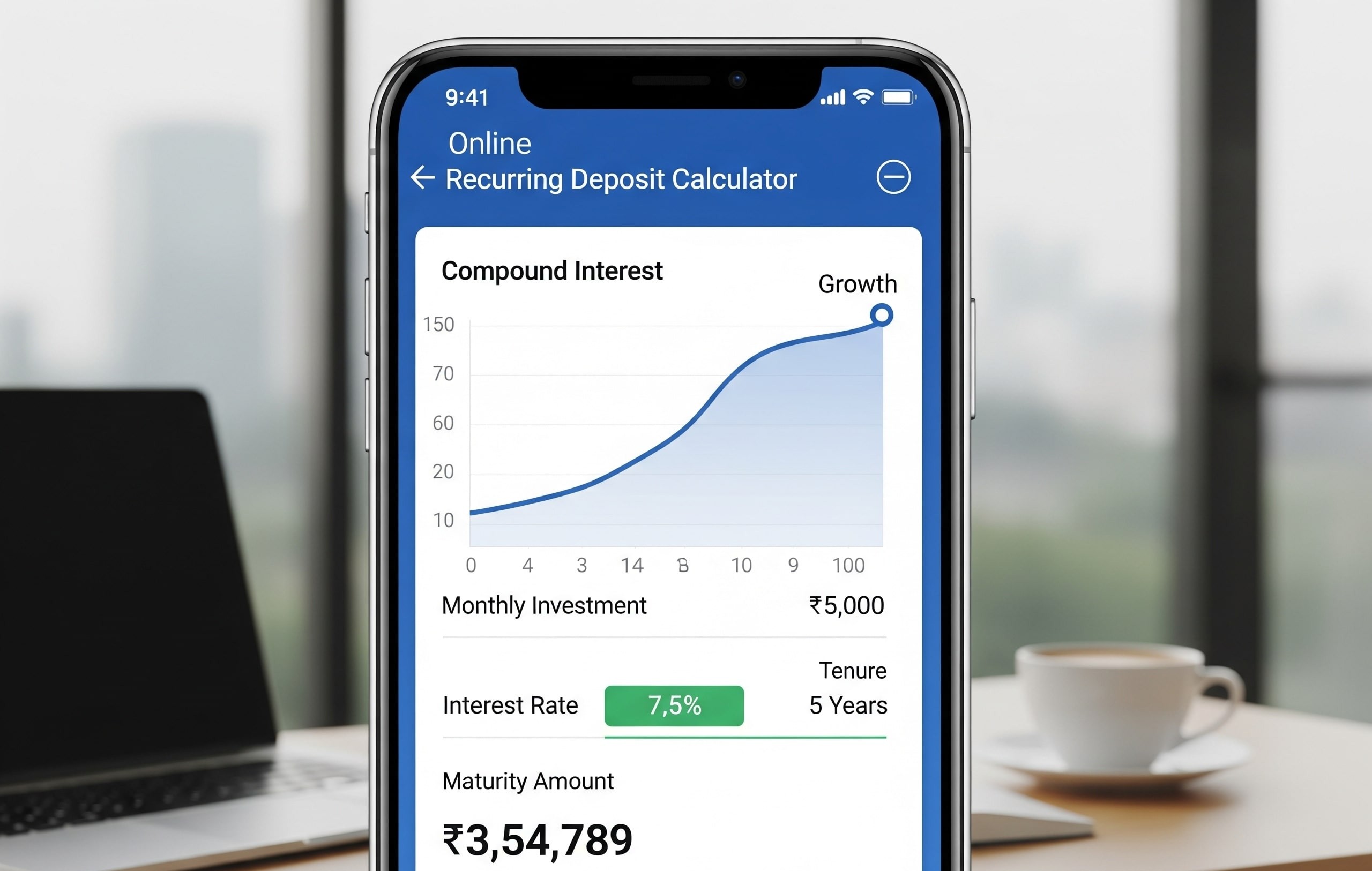
Investing in mutual funds online has become an accessible and convenient way to grow your wealth. Gone are the days of visiting brick-and-mortar offices or going through piles of paperwork. Today, with a few clicks, you can start building a diverse investment portfolio right from the comfort of your home.
In this article, we’ll walk you through how to invest in mutual funds online—from choosing the right platform to managing your investments. Whether you’re a beginner or a seasoned investor, this guide will provide you with the essential steps and considerations for investing online.
Also Read: Why Investment Is Important Once You Start Your Career | Top 5 High-Interest Rates Paying Government Schemes
Why Choose Online Platforms for Mutual Fund Investments?
The rise of digital platforms has revolutionized how we invest. Here are a few compelling reasons why investing in mutual funds online is a smart move:
Convenience and Accessibility
Online platforms allow you to invest in mutual funds anytime, anywhere. There’s no need to visit physical offices, and the entire process can be completed from your laptop or smartphone.
Lower Fees and Commissions
Many online platforms offer lower fees compared to traditional investment channels. This can significantly impact your returns over time, as lower fees mean more of your money is working for you.
Wide Range of Options
Online platforms provide access to a broad spectrum of mutual funds—equity, debt, hybrid, and more. You can easily compare different funds and make an informed decision that aligns with your financial goals.
Real-Time Access to Information
One of the biggest advantages of investing in mutual funds online is the access to real-time data and analytics. You can track the performance of your investments, view detailed fund reports, and adjust your strategy based on market conditions.
Step-by-Step Guide: How to Invest in Mutual Funds Online
Investing in mutual funds online is simple if you follow these steps:
Step 1: Choose the Right Mutual Fund
Before diving into online investing, it’s important to select the right mutual fund that suits your financial goals and risk tolerance. Consider factors like:
- Fund type: Equity funds, debt funds, hybrid funds, or index funds.
- Risk level: Some funds are high-risk, while others offer lower but steadier returns.
- Investment horizon: Decide whether you’re looking for short-term gains or long-term wealth accumulation.
- Fund performance: Look at the fund’s historical returns and the reputation of the fund manager.
Make sure to use online comparison tools to evaluate funds based on performance, expense ratios, and ratings. (Tip: You can also check out our detailed article on [how to compare mutual funds].)
Step 2: Select a Trusted Online Platform
To invest in mutual funds online, you need to choose a platform that meets your needs. Popular platforms include:
- Brokerage platforms like Vanguard, Fidelity, or Schwab.
- Direct mutual fund platforms offered by fund houses such as BlackRock or T. Rowe Price.
- Robo-advisors like Wealthfront or Betterment, which automatically invest your money based on your preferences.
When selecting a platform, consider factors such as user interface, fees, customer service, and the types of funds they offer. Make sure the platform is secure and trustworthy, with good user reviews. (Check out our [guide to the best online mutual fund platforms] for more information.)
Also Read: Short-Term Investment Plans with High Returns | How to Earn Money Online at Home
Step 3: Complete KYC Requirements
Know Your Customer (KYC) is a mandatory process for all investors in mutual funds. This helps financial institutions verify your identity and prevent fraud. Fortunately, completing KYC online is easy and can be done in a few steps:
- Submit identification documents: Upload scanned copies of your ID (like a passport or driver’s license) and proof of address.
- Selfie or video verification: Some platforms may require a selfie or video verification to confirm your identity.
- Online form submission: Fill out your details on the platform’s KYC section.
Completing KYC is usually a one-time process. Once verified, you’re free to start investing.
Step 4: Start Investing
Once your KYC is complete and you’ve selected a mutual fund, it’s time to start investing. Here’s how:
- Link your bank account: Most platforms allow you to link your bank account for seamless transfers.
- Set up SIP (Systematic Investment Plan): You can choose to invest a fixed amount monthly through SIPs. This allows you to build wealth over time by making regular, smaller investments.
- Lump-sum investment: If you prefer, you can make a one-time lump-sum investment.
When setting up your investments, review the minimum investment requirements. Some funds have very low thresholds, making it easy to get started with just a few hundred dollars.
Step 5: Track and Manage Your Investments
Once you’ve invested, it’s essential to monitor your mutual fund’s performance regularly. Most online platforms offer tools and dashboards that make it easy to:
- Track fund performance: View charts and reports on your fund’s growth.
- Adjust your investments: Rebalance your portfolio as needed, especially if market conditions change.
- Automate your investments: Some platforms allow automatic reinvestments of dividends or adjustments to SIP amounts.
By keeping an eye on your investments, you’ll be better equipped to make changes and maximize your returns over time.
Types of Mutual Funds You Can Invest in Online
Investing in mutual funds online gives you access to various types of funds, each with its benefits and risks. Here’s a breakdown of the main types:
- Equity Mutual Funds: Invest primarily in stocks, aiming for high returns but carrying higher risk.
- Debt Mutual Funds: Invest in fixed-income securities like bonds, suitable for conservative investors seeking steady income.
- Hybrid Funds: Combine both equity and debt to provide a balance of risk and return.
- Index Funds & ETFs: These track a particular index like the S&P 500, offering low-cost, passive investing options.
Choosing the right type of mutual fund depends on your financial goals, risk tolerance, and investment timeline.
Tips for Choosing the Right Mutual Fund for Your Financial Goals
When choosing a mutual fund, consider the following tips to ensure you align your investments with your objectives:
- Assess your risk tolerance: Equity funds are higher risk but offer potentially higher returns. Debt funds are more stable but yield lower returns.
- Set a clear investment horizon: Determine how long you plan to keep your money invested. Short-term investors may prefer liquid funds, while long-term investors can benefit from equity or hybrid funds.
- Check fund performance: Look at historical returns but remember that past performance does not guarantee future results.
- Expense ratio: Lower expense ratios can significantly improve your overall returns, so compare these across funds.
Online tools make it easy to filter and compare mutual funds based on these factors.
Risks to Consider When Investing in Mutual Funds Online
While investing in mutual funds online is convenient, it’s important to understand the risks:
- Market risk: Mutual funds, especially equity funds, are subject to market fluctuations. Be prepared for both gains and losses.
- Liquidity risk: Some funds have lock-in periods or delayed redemption processes. Make sure you understand the terms before investing.
- Platform reliability: Ensure the platform you choose has robust cybersecurity measures to protect your personal and financial data.
Being aware of these risks can help you make more informed investment decisions and mitigate potential losses.
Also Read: Mutual Fund Lock In Period | SBI Tax Saving Mutual Fund
FAQs: Common Questions About Investing in Mutual Funds Online
How much money do I need to start investing in mutual funds online?
You can start with as little as $100, depending on the fund. Many platforms also offer SIPs, allowing you to invest smaller amounts regularly.
Are online mutual fund platforms safe?
Yes, most reputable platforms have advanced security protocols in place. Look for SSL certificates, two-factor authentication, and positive user reviews.
Can I withdraw from mutual funds online?
Yes, you can redeem your mutual fund units online. However, some funds may have lock-in periods or redemption fees, so be sure to read the fine print.
What is the difference between SIP and lump-sum investment?
SIP involves investing small amounts regularly, while lump-sum investment is a one-time payment. SIPs help with disciplined investing, while lump-sum investments can benefit from market timing.
How are taxes handled for online mutual fund investments?
Tax treatment depends on the type of fund and the holding period. Equity funds are typically taxed at a lower rate after one year, while debt funds may have different tax implications. Consult with a tax advisor for specifics.
Conclusion: Start Your Journey of Online Mutual Fund Investing Today
Investing in mutual funds online is easier than ever, offering a convenient and cost-effective way to grow your wealth. By following the steps outlined above, you can confidently start building a diverse portfolio that aligns with your financial goals.
More Stories:
Hello there, my name is Phulutu, and I am the Head Content Developer at Nivesh Karlo. I have 13 years of experience working in fintech companies. I have worked as a freelance writer. I love writing about personal finance, investments, mutual funds, and stocks. All the articles I write are based on thorough research and analysis. However, it is highly recommended to note that neither Nivesh Karlo nor I recommend any investment without proper research, and to read all the documents carefully.





Leave a Reply